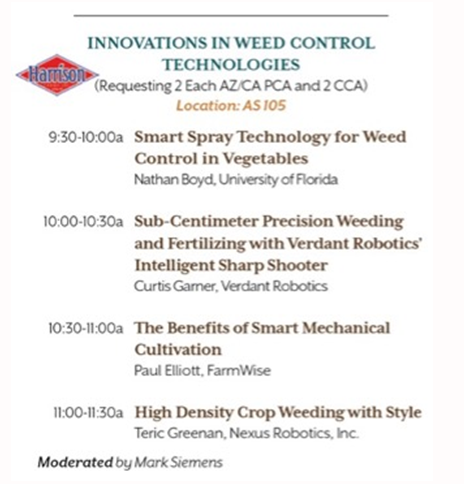-
Jun 26, 2024Keeping Track of Major Produce Pests During the SummerHope you are all enjoying the summer so far and keeping busy. Although, we’re about 2 months away from the Fall produce season, it’s never too early to begin thinking of IPM strategies you will be using to battle key insects next season. This includes keeping track of their typical activity during June, July, and August. Below is a short discussion detailing individual pests.
Aphids: The major aphid species that are important in produce crops each spring include green peach aphid, foxglove aphid and lettuce aphid. These species are considered cool season pests and are biologically most active during the winter and spring when temperature average around (55-65 F). We do not find them on summer crops as the high temperatures prohibit their activity. They essentially become extinct each summer only to reappear in the fall to infest crops in Oct-Dec migrating into the desert via N-NW winds that occur after the monsoons.
Diamondback Moth (DBM): Another key pest that disappears each summer but for a different reason than for aphids. The host range of DBM is limited to only brassica crop and plants. Although brassica weeds are common during the winter, they occur during the summer due to high temperatures and dry conditions. Thus, like aphids, DBM populations from the previous spring season become “extinct” during the summer when brassica crops and weeds are absent. They reappear each fall migrating in on high winds associated with tropical storms from Mexico, or arrive into the region on infested brassica transplants from California.
Whiteflies: A resident pest that occurs year-round in the desert. As a warm season pest, whiteflies are most abundant on fall produce crops, and seldom a problem during the winter and spring. Peak abundance occurs during the summer months on cotton, and again in September and October on fall brassica, leafy vegetables and fall melons. Thus, it is important to control whiteflies in cotton prior to defoliation to prevent large migrations onto fall produce crops. In addition, whiteflies can be found on several weeds such as purslane, goosefoot, ground cherry, and sunflowers. Sanitation in and around fields being prepped for fall plantings is important. Preventatively, growers should consider applying soil, system insecticides such as imidacloprid or Verimark to Fall produce crops.
Beet Armyworm (BAW): A warm-season pest that occurs year-round in the desert. They tend to reach peak abundance twice a year. Generally, the most important peak is in September and October when weather is ideal for their development, flight activity and oviposition. A second peak occurs in late spring. Activity is generally light during the summer, occurring primarily in alfalfa crops. Although BAW is known to migrate in from the south via monsoon and tropical storms, resident populations annually occur in alfalfa during the summer. Thus, to minimize BAW in fall produce crops, thorough management of BAW can potentially minimize their movement onto Fall produce crops. Weeds are also a source of BAW (purslane, goosefoot, sunflower and Russian thistle) so sanitation in and around fields is important.
Western Flower Thrips (WFT): Also a resident pest that can be found in the desert year round. WFT is most abundant on lettuce in the late spring, but peaks in abundance on alfalfa, melons and cotton is May and June. During the late summer numbers drop dramatically where thrips can be found on melons and alfalfa and weeds like goosefoot and purslane. WFT slowly move into lettuce again in early fall and are least abundant during the winter. Sanitation of weeds during the summer can help reduce thrips abundance moving into the fall crops and weeds.
For more information see: Keeping Track of Major Produce Pests During the SummerTo contact John Palumbo go to: jpalumbo@ag.Arizona.edu











